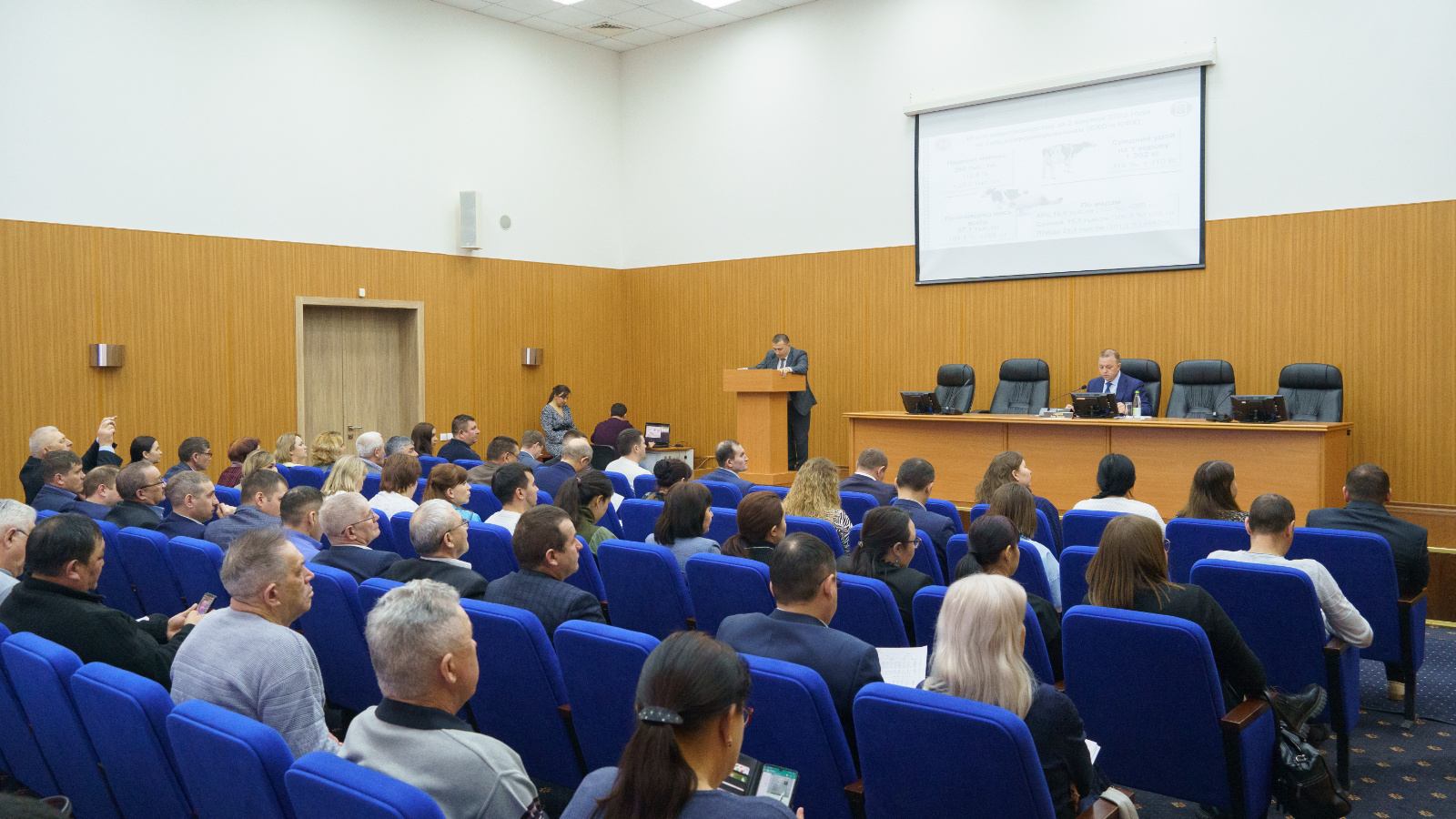Results of animal husbandry for 2 months of the current year have been summed up

The Ministry of Agriculture and Food held a meeting with the regions of Tatarstan, at which they summed up the results of animal husbandry for 2 months of the current year. The meeting was chaired by Deputy Minister of Agriculture and Food of the Republic of Tatarstan Lenar Garipov.
The event was attended by livestock consultants, heads of selection and breeding services of the departments of agriculture and food in municipal districts and other responsible persons. Topical issues of animal husbandry were discussed at the meeting.
The head of the Department for the Development of Livestock Industries Siren Nigmatzyanov in his speech focused on the issues of milk and meat production, as well as an analysis of the work of farms.
To date, 260 thousand tons of milk have been produced, with an increase of 29 thousand tons, 112% compared to last year. In terms of productivity per cow for 2 months, we are going with a 10% increase. The largest volumes of milk increased Menzelinsky, Kukmorsky, Aznakaevsky, Muslyumovsky, Yelabuga, Bugulminsky, Mamadyshsky, Sabinsky, Baltasinsky, Arsky, Alkeevsky and Zelenodolsky districts.
Only 67 thousand tons of meat were produced, of which 16 thousand tons of cattle meat, with an increase of 2% by 2022. Pig meat - 15.5 thousand tons, 100.4%, and poultry meat - 35 thousand 266 tons, with a plus of 443 tons.
The number of pigs in large pig breeding complexes as of March 1 amounted to 445 thousand heads, 2 thousand 64 heads less compared to last year and 700 heads less in February. LLC Avangard increased 4 thousand heads, LLC Kamsky Bekon 2 thousand 700. There is a reduction in LLC Navruz and LLC Phoenix.
The number of sheep in the republic amounted to 54 thousand 85 heads, which is 544 heads less than last year. Significantly increased the number of sheep Elabuga district - plus 851 heads, Tukaevsky - 508 heads due to the production of offspring per month 590 lambs, Agryz 478. Significant rates are also in Nurlat and Nizhnekamsk districts.
There is also a decrease in the number of goats by 252 heads compared to last year.
The highest concentration of horses is in Sabinsky district - 2 thousand 380 heads and continues to increase this year. More than 1 thousand heads are in Baltasinsky and Buinsky regions, however, there is a slight decrease. Leninogorsk, Tyulyachinsky, Rybnoslobodinsky and Arsky districts increased to the level of last year.
“Dear colleagues, the development of horse breeding should become a priority,” said Siren Nigmatzyanov.
At the end of the meeting, those present were invited to a seminar - meetings on livestock technology, fodder and digitalization. The seminars will be held in 5 zones. Preliminarily identified: Agryz, Leninogorsk, Alekseevsky, Vysokogorsky and Drozhzhanovskiy municipal districts.